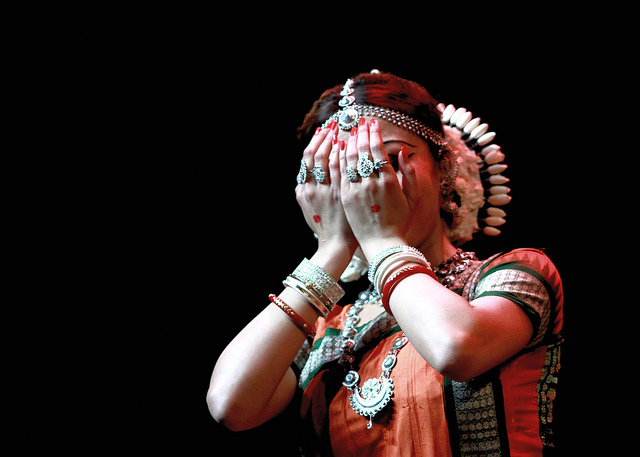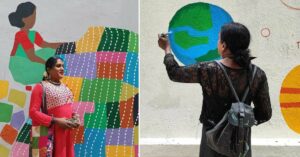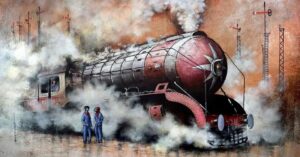Did You Know About These 15 Lesser Known Amazing Dance Forms Of India?
If you want to now about the culture of a country, watch its dance form. And when it comes to India we have a lot more on our plate. With 29 states and hundreds of traditions and cultures, we can’t even count the various amazing dance forms our numerous communities have to offer. Here we discover 15 of them!

If you want to now about the culture of a country, watch its dance form. And when it comes to India we have a lot more on our plate. With 29 states and hundreds of traditions and cultures, we can’t even count the various amazing dance forms the numerous communities of India have to offer.
There are some dance forms which are recognized all over the country and the world, and then there are some which, in spite of being equally amazing, remain largely unnoticed. Let’s tap into the rich culture of India and know more about these beautiful yet lesser known dance forms from various parts of the countries. Here is a list of 14 such dance forms-
1. Chauu
This is tribal martial arts dance which is popular in Orissa, Jharkhand and West Bengal. This regional dance form is performed during spring festival of Chaitra Parva. It is believed that the word “chauu” coms from a Sanskrit word “chaaya” which means shadow. This is a mythological dance form which is inspired from various episodes of Ramayana and Mahabharata. There are three different styles of Chauu which you can differentiate according to the use of the masks. The dance is performed in an open space with performers wearing various colourful costumes according to their roles.
2. Sattriya
The dance which was initially introduced by Srimanta Sankaradeva to convey mythological stories to people in a fun and easy-going manner, has come a long way since its inception. The dance is said to have been inspired by the principles of both traditional Indian dance styles as well as folk and tribal traditions of Assam and North-east India.
The dance form came into limelight in the year 2000 when it received recognition as one of the eight classical dances of India.
3. Kalbelia
This intense dance form is enriched by a nomadic tribe of Rajasthan that bears the same name and has been famous as snake charmers over the centuries. Therefore the costume of the dancers is also inspired by the prints of serpents.
The dance form is said to be a sense of identity for the tribe, where the females gracefully move their body to match the movement of the snakes to the music played by the males. The ‘sapera dancers’ or ‘snake charm dancers’ are also famous for their costume and jewelry apart from the dance moves, which brought them into prominence in the year 2010 by UNESCO’s representative record of the Intangible Cultural Heritage of Humanity.
4. Gotipua
Originated in a village called Raghurajpur in Odisha, ‘Gotipua’ when translated in English means ‘single boy’. Until the time they reach adolescence, young boys come dressed together like girls and offer praises to lord Krishna and Jagannath.
The traditional costume and make-up of the dancers has transformed quite a bit over the years. As history goes, Gotipua is said to have succeeded the famous Odissi dance, with its roots found in the demise of the devadasi tradition. Hence, since the 16th century, the young lads are said to have kept the dancing culture alive.
5. Charkula Dance
With a belief that Lord Krishna’s wife Radha was born on the third day after Holi, the inhabitants of Braj region of Uttar Pradesh religiously perform this dance every year. The women drape themselves in colorful outfits and move rhythmically to the tunes of Lord Krishna’s songs or ‘rasiyas’.
The movements are extremely graceful in spite of the charkulas (a large multi-tiered wooden pyramid) balancing over their head. The charkulas are said be lighted by 108 oil wicks. The dance form is enthused by many legendary stories related to Radha and Krishna.
6. Gaur Maria Dance
This folk dance of Madhya Pradesh is performed to incite the hunting spirit of the tribe. The entire dance form has a wild touch to it, starting from the costumes to the dancing.
The gaur (bison) maria dance form is further enchanted by the use of a horn or a bamboo trumpet to commence the dance. The women of the tribe hold dancing sticks in their hand and move according to the beats of the drum and cross and re-cross their dancing male counterparts.
7. Ghode Modini
This outstanding dance performance takes the form of a warrior dance celebrating the triumph of Ranes, the Maratha rulers of the Sattari taluka in Goa, over the Portuguese in Goa. The Kshatriya dancers dress up in their popular perky attire with a wooden horse tied at their waist and bright headgears. The dancers magnificently move in horse-like steps, to the sounds of dholaks. They go till the corners of the village and return in revelry.
The movements include brandishing of the sword in accordance with the tunes of the drum. The dance form is generally performed during the Shigmo festival in few northern taluks of Goa, where the Maratha rulers ruled.
8. Kummi Dance
This is one of the most ancient dance forms from the villages of Tamil Nadu. it was invented when there were no musical instruments. The dance is performed by women and they move according to the sound of their claps. The women stand in a circle and dance while clapping their hands rhythmically to lifting songs. This dance is usually performed during temple festivals.
Women of various age groups come together, form a circle and dance to the tune of Kummi songs (mostly, the women in the group sing them aloud). Some times even the men perform together with the women. Since ancient times it’s been performed to mark the arrival of the harvest season. Hence it is mostly performed during Pongal i.e. the harvest festival of Tamil Nadu, and also during marriages and other regular festivities.
9. Phag Dance
Phag or Phalgun dance, as the name suggests, is a myriad form of dance performed during the phalgun month (February-March) by mostly farmers and their families. During this season, the crops are growing well, the weather is good, and there is some free time between harvesting and sowing. Hence it is a good time to indulge in some light revelry.
Sometimes, it’s only the men who perform this dance, but more often even the women accompany them in bright, colourful attire.
10. Cheraw dance
Also colloquially know as “bamboo dance”, this is a popular folk dance of Mizoram. The bamboos are kept in cross and horizontal forms on the ground. The male dancers move the bamboos according to the beats, female dancers step in and out of the crossed and horizontally laid bamboos.
Traditionally, the dance was performed to ensure a safe passage for the souls of mothers who died at childbirth, so that she enters the home abode safely. But now, Cheraw dance is performed on any occasion.
11. Saila Dance
The dance form from Chhattisgarh is performed by boys after the harvest season. This stick-dance involves the boys who move in various styles as they strike their stick against the stick of the person standing next to them. The climax in a Saila performance is the Snake dance. The people who participate in the dance are given paddy by the villagers, which they take home and rejoice.
12. Dhangari Gaja
This traditional folk dance ff Maharashtra is performed in honour of God Biruba every year to please him. The vibrant dance belongs to the shepherd, cowherd, and weavers of Sholapur district, and is thus very close to nature. It is performed on drum beats by dancers wearing a traditional Marathi costume.
13. Rouf
Generally performed during spring time, this folk dance from the northern state of Jammu and Kashmir is slow and graceful in nature. The dancers are usually facing each other in two rows, and moving to beautiful, poetical songs called Chakri, in simple movements. Rouf is also performed on various occasions and festivals like Eid, marriages, etc.
14. Sammi
Think of Punjab, and the first dance that comes to mind is the Bhangra. Well, if we look a little beyond that, and delve a little into tribal traditions, we come across the beautiful Sammi dance, where women decked in colourful Punjabi attire dance in a mesmerizingly graceful fashion. Steeped in ancient legends and mythology, this dance is said to have been first performed by Princess Sammi of Marwad, although it is more popular in several tribal districts of Punjab including Sandalbar area (now in Pakistan).
15. Dollu Kunitha
This drum-based dance form of Karnataka is performed to please the deity of Beereshwara. This dance form is also related to the spiritual well being of the performers apart from entertainment. The dance is very popular in North Karnataka and is performed in a majority of religious ceremonies. It is an alternating slow and rapid dance style and is directed by a leader on drums or cymbals at the center.
Like this story? Or have something to share? Write to us: [email protected], or connect with us on Facebook and Twitter (@thebetterindia).
This story made me
- 97
- 121
- 89
- 167
Tell Us More
We bring stories straight from the heart of India, to inspire millions and create a wave of impact. Our positive movement is growing bigger everyday, and we would love for you to join it.
Please contribute whatever you can, every little penny helps our team in bringing you more stories that support dreams and spread hope.



















